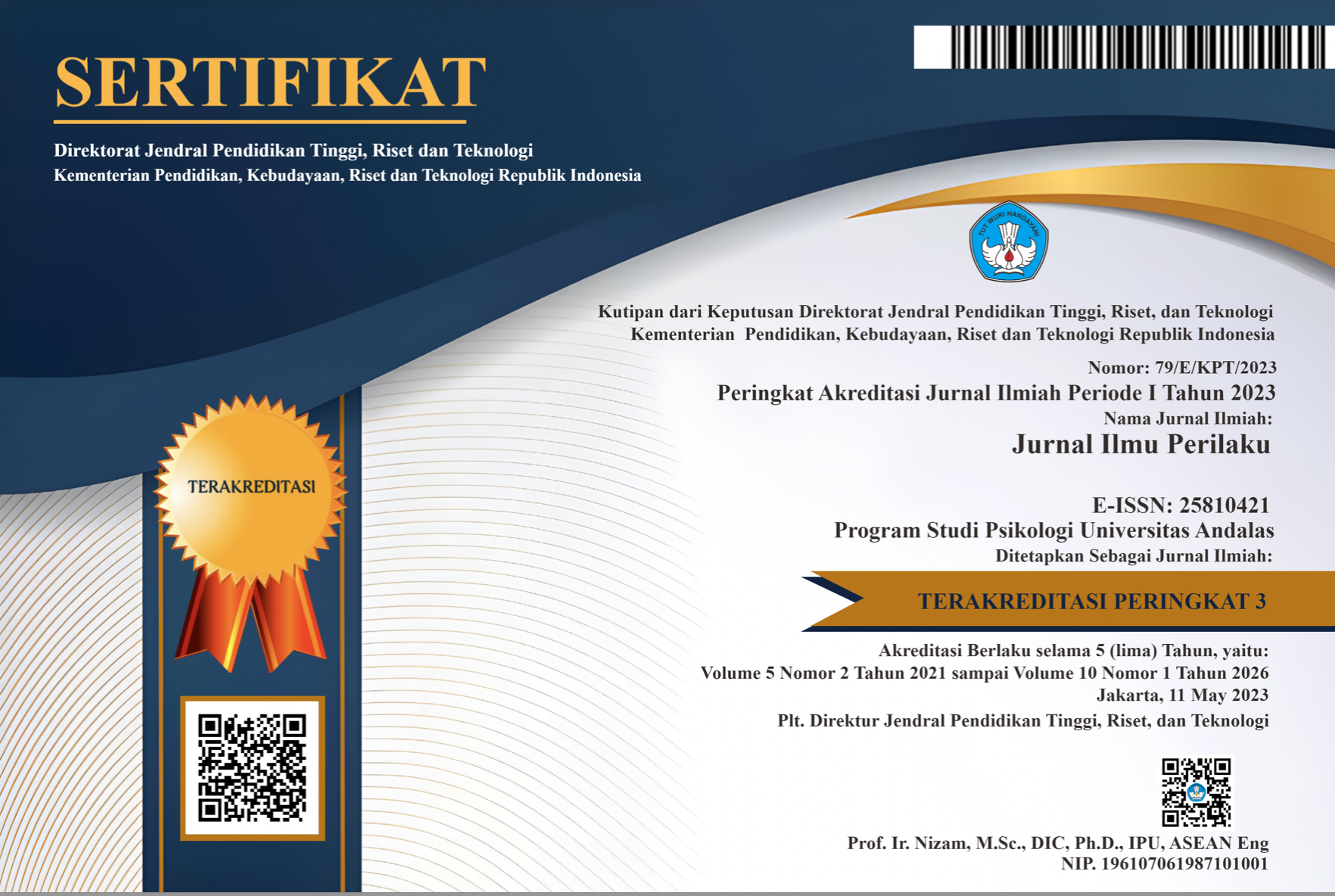Pemahaman dan Penerapan Ajaran Kawruh Jiwa Ki Ageng Suryomentaram Tentang Raos Persatuan Dalam Kehidupan Sehari-hari
Abstract
Keberagaman budaya merupakan salah satu topik yang paling penting di dunia saat ini. Keanekaragaman budaya selain telah menciptakan lingkungan yang indah, juga memiliki potensi kesalahpahaman yang dapat menyebabkan kebingungan, kemarahan dan meningkatkan eskalasi permusuhan. Adalah warga Dusun Bangun Rasa, Kabupaten Bantul, para warganya menerapkan raos persatuan dari ajaran Ki Ageng Suryomentaram. Tujuan dari penelitian ini adalah untuk memahami rasa persatuan di Dusun Bangun Rasa sehingga dapat dijadikan sebagai model sebuah masyarakat yang berkesatuan dengan pendekatan kualitatif dan menggunakan metode penelitian studi kasus. Pengumpulan data dilakukan dengan wawancara kepada para subyek dan informan sebagai sumber data dan observasi partisipan maupun non partisipan secara live in. Sumber data lain adalah written documents dan unwritten documents. Hasil dari penelitian ini adalah: Pertama, rasa persatuan bagi warga Bangun Rasa dipahami sebagai “Rasa Sama”, guyub rukun dan kegotongroyongan. Kedua, penerapan dari rasa persatuan di dalam kehidupan sehari-hari oleh warga dusun Bangun Rasa tercermin dalam dua penerapan, yaitu (1) penerapan di keluarga berupa musyawarah dan tidak memaksakan kehendak, dan (2) penerapan di masyarakat, berupa perilaku gotong royong. Ketiga, manfaat dari rasa persatuan yaitu urip dadi sugih (hidup menjadi “kaya”), urip dadi entheng (hidup menjadi “ringan”), hubungan antarindividu menjadi tidak kaku, menanamkan rasa “kita tidak bisa hidup tanpa orang lain”, menanamkan rasa empati, dan beban pemerintah menjadikan ringan. Dan keempat, kondisi psikologis para warga dari diterapkannya roas persatuan adalah melahirkan rasa nyaman, sumeleh, dan tenteram.
Downloads
References
Aditya, Ivan. (2013). Pahami Budaya Jawa Lebih Dekat. Dalam http://krjogja.com/read/196690/pahami-budaya-jawa-lebih-dekat.kr. diakses pada 6 Januari 2014.
Bonneff, Marcel. (1993). Ki Ageng Suryomentaram, Javanese Prince and Philosopher (1892-1962). Cornell Southeast Asia Program. Indonesia Journal Archipel, No. 57.
Brewer, B. Marilynn and Gardner, Wendi. (1996). Who Is This “We”? Levels of Collective Identity and Self Representations. Journal of Personality and Social Psychology. 1996, Vol. 71, No. 1, 83-93.
Campbell, Catherine. (1997). Self-Esteem in Context: A Case Study of The Motivational Processes Underlying Social Identity Construction By Township Youth. Psychology in society (PINS), 22, 1997, 20-36.
Creswell, John W. (1998). Qualitative inquiry and research desighn: Choosing
among five traditions. New York: SAGE Publication, Inc.
Dovidio, J.F., Piliavin, J.A., Schroeder, D.A., and Penner, L.A. (2006). The Social Psychology of Prosocial Behaviour. New Jersey: Lawrence Erlbaum Associates.
Faturochman. (2008). Model-model Psikologi Kebhinnekatunggalikaan dan
Penerapannya di Indonesia. Dipetik 27/12/2012, dari http://fatur.staff.ugm.ac.id/file/JURNAL-Kebhinekaan.pdf.
Hornsey, J. Matthew. (2008). Social Identity Theory and Self-categorization Theory: A Historical Review. Social and Personality Psychology Compass 2/1 (2008): 204-222, 10.1111/j.1751-9004.2007.00066.x
Jane, Stets, E. and Burke, J. Peter. (2000). Identity Theory and Social Identity Theory. Social Psychology Quarterly. 2000, Vol. 63, No. 3, 224-237.
Jatman, Darmanto. (2008). Ilmu Jiwa Kaum Pribumi. Pidato Pengukuhan. Disampaikan pada Upacara Peresmian Penerimaan Jabatan Guru Besar dalam Psikologi pada Fakultas Psikologi Universitas Diponegoro. Tidak diterbitkan.
Jatman, Darmanto. (1997). Psikologi Jawa. Yogyakarta: Yayasan Bentang Budaya.
Koentjoro. (2008). Materi Kuliah Metode Penelitian Kualitatif. Tidak diterbitkan.
Latif, Yudi. (2011). Negara Paripurna: Historisitas, Rasionalitas, dan Aktualitas.
Jakarta: Gramedia Pustaka Utama.
Lutfie, Ahmad. (2013). Walisanga-Siti Jenar, ‘Pakar’ Psikologi Jawa. Dalam http://krjogja.com/read/193439/walisanga-siti-jenar-pakar-psikologi-jawa.kr. diakses pada 6 Januari 2014.
Matsumoto, David. 2008. Pengantar Psikologi Lintas Budaya. Yogyakarta: Pustaka Pelajar.
Matsumoto, David & Juang, Linda. 2004. Culture and Psychology, 3rd edition.
Wordsworth: Thompson Learning Inc.
Mannino, Clelia Anna and Snyder, Mark. (2012). Psychological Sense of Community: Contributions Toward a New Understanding. Global Journal of Community Psychology Practice. Volume 3, Issue 4. December 2012.
McMillan, D.W. (1996). Sense of community. Journal of Community Psychology, Volume 24, Issue 4, pages 315–325.
McMillan, D.W., and Chavis, D.M. (1986). Sense of community: A definition and theory. American Journal of Community Psychology, Volume 14, Issue 1, pages 6-23.
Mulder, Neils. 1983. Kebatinan dan Hidup Sehari-hari Orang Jawa. Jakarta:
Gramedia Pustaka Utama.
Prihartanti, Nanik. 2004. Kepribadian Sehat Menurut Ki Ageng Suryomentaram.
Surakarta: Muhammadiyah University Press.
Santoso, Heri. 1997. Dimensi Epistemologi dalam Indeginisasi Ilmu-ilmu Sosial di Indonesia (sebuah pelacakan awal). Dalam Jurnal Filsafat Edisi Khusus Agustus 1997. Aktualisasi Filsafat: Upaya Mengukir Masa Depan Peradaban. Yogyakarta: Fakultas Filsafat UGM.
Suryomentaram, Ki. A. (2003). (Kawruh Jiwa: Wejanganipun Ki Ageng Suryomentaram, 1990). Falsafah Hidup Bahagia II: Jalan Menuju Aktualisasi Diri (Ki Grangsang Suryomentaram , Ki Otto Suastiko, Ki Moentoro Atmosentono: Terjemahan). Jakarta: Grasindo.
Suryomentaram, Ki. A. (1989). Kawruh Jiwa Jilid 1 Wejanganipun Ki Ageng Suryomentaram. Jakarta: CV. HAJI MASAGUNG.
Suryomentaram, Ki. A. (1990). Kawruh Jiwa Jilid 2 Wejanganipun Ki Ageng Suryomentaram. Jakarta: CV. HAJI MASAGUNG.
Suseno, Franz Magnis. 2001. Etika Jawa. Sebuah Analisis Filsafat tentang Kebijaksanaan Hidup Jawa. Jakarta: Gramedia.
Widiyanto, Danar. (2014). Kawruh Jawa dan Ajaran Kebahagiaan Sejati. Dalam
http://krjogja.com/read/237511/kawruh-jawa-dan-ajaran-kebahagiaan-sejati.kr. diakses pada 25 Desember 2014.

This work is licensed under a Creative Commons Attribution-NonCommercial-ShareAlike 4.0 International License.
The non-commercial use of the article is governed by the Creative Commons Attribution license as currently displayed on Creative Commons Attribution-NonCommercial-ShareAlike 4.0 International License.
JIP's spirit is to disseminate articles published are as free as possible. Under the Creative Commons license, JIP permits users to copy, distribute, display, and perform the work for non-commercial purposes only. Users will also need to attribute authors and JIP on distributing works in the journal.
Please find the rights and licenses in Jurnal Ilmu Perilaku (JIP).
- License
The non-commercial use of the article will be governed by the Creative Commons Attribution license as currently displayed on Creative Commons Attribution-NonCommercial-ShareAlike 4.0 International License.
- Author’s Warranties
The author warrants that the article is original, written by stated author(s), has not been published before, contains no unlawful statements, does not infringe the rights of others, is subject to copyright that is vested exclusively in the author and free of any third party rights, and that any necessary written permissions to quote from other sources have been obtained by the author(s).
- User Rights
JIP's spirit is to disseminate articles published are as free as possible. Under the Creative Commons license, JIP permits users to copy, distribute, display, and perform the work for non-commercial purposes only. Users will also need to attribute authors and JIP on distributing works in the journal.
- Rights of Authors
Authors retain the following rights:
- Copyright, and other proprietary rights relating to the article, such as patent rights,
- The right to use the substance of the article in future own works, including lectures and books,
- The right to reproduce the article for own purposes, provided the copies are not offered for sale,
- The right to self-archive the article.
- Co-Authorship
If the article was jointly prepared by other authors, the signatory of this form warrants that he/she has been authorized by all co-authors to sign this agreement on their behalf, and agrees to inform his/her co-authors of the terms of this agreement.
- Termination
This agreement can be terminated by the author or JIP upon two months’ notice where the other party has materially breached this agreement and failed to remedy such breach within a month of being given the terminating party’s notice requesting such breach to be remedied. No breach or violation of this agreement will cause this agreement or any license granted in it to terminate automatically or affect the definition of JIP.
- Royalties
This agreement entitles the author to no royalties or other fees. To such extent as legally permissible, the author waives his or her right to collect royalties relative to the article in respect of any use of the article by JIP or its sublicensee.
- Miscellaneous
JIP will publish the article (or have it published) in the journal if the article’s editorial process is successfully completed and JIP or its sublicensee has become obligated to have the article published. JIP may conform the article to a style of punctuation, spelling, capitalization, referencing and usage that it deems appropriate. The author acknowledges that the article may be published so that it will be publicly accessible and such access will be free of charge for the readers.










